Is cashmere merciless? Cashmere wool is made by breeding, sustaining and harvesting the undercoat of goats handled as livestock and income-producing belongings. On this alone, supporting the cashmere commerce is taken into account merciless and unethical relating to goat welfare.
Goats are furthermore terribly damaging to the planet, inflicting additional hurt than good to ecosystems and wildlife. Ought to we then be breeding additional?
Then you definitely’ll have Mongolian herders who’ve been shepherding cashmere goats for tons of of years. It’s a observe handed down from interval to interval and is little doubt one among many few viable and revered careers contained in the area. What about them?
There’s tons of to unpack correct proper right here as we uncover the moral nuances of the cashmere commerce.
Nonetheless first, let’s briefly break down this “magical” supplies and its premium ticket.
What’s cashmere, and the place does it come from?
Cashmere is an opulent fibre that’s tender, versatile and intensely heat.
It’s 3 occasions additional insulating than wool and thinner than a human strand of hair. This implies you presumably can positioned on a light-weight garment whereas nonetheless conserving heat.
Cashmere is mostly used to make sweaters, scarfs and beanies. A typical cashmere sweater will price anyplace between $120 to $1,000.


Why so costly?
Efficiently, cashmere fibre comes from the undercoats of specific goat breeds. These goats are often discovered all by means of the Himalayas, the place temperature can get all the easiest way proper all the way down to minus 30 ranges Celsius (detrimental 22 ranges Fahrenheit).
The goats develop a extraordinarily thick coat, and their inside hair (the cashmere) has very advantageous fibres to deal with the chilly circumstances.
Cashmere is harvested yearly, often in spring when the goats are naturally beginning to shed. Herders every clip or comb out the fibres when the goats moult.
The on a regular basis cashmere yield for a goat is 200 grams (7.05 ounces). For comparability, sheep produce 3 kilograms (6.61 kilos) of wool a yr.
Research additional: Is Wool Vegan? Moral Problems with The Wool Enterprise
You’ll want 5-10 goats to supply merely 1 cashmere sweater.
It’s the mix of unusual harvesting, the comparatively small yields, and the fascinating properties that makes cashmere so premium.
How large is the cashmere commerce?
Cashmere accounts for nearly 7 per cent of the $71.2 billion world luxurious market.
To get a slice of this worthwhile pie, farmers have elevated their flocks, and 29 million goats worldwide graze the steppes correct now, which is 5 occasions the quantity 30 years before now.
In step with the Worldwide Wool Textile Organisation, roughly 25,208 tonnes of cashmere was produced in 2020.
China dominates uncooked cashmere exports, producing 60 per cent of world output, with Mongolia coming in second, making up 20 per cent of manufacturing.
A very powerful importers of cashmere are in Europe (the UK, Italy and Germany), making up 38% of the worldwide share in 2018.
Whereas cashmere continues to be a strong market, with aware shoppers demanding additional sustainable and moral practices, large firms have boycotted cashmere to reply to these altering shopper preferences.
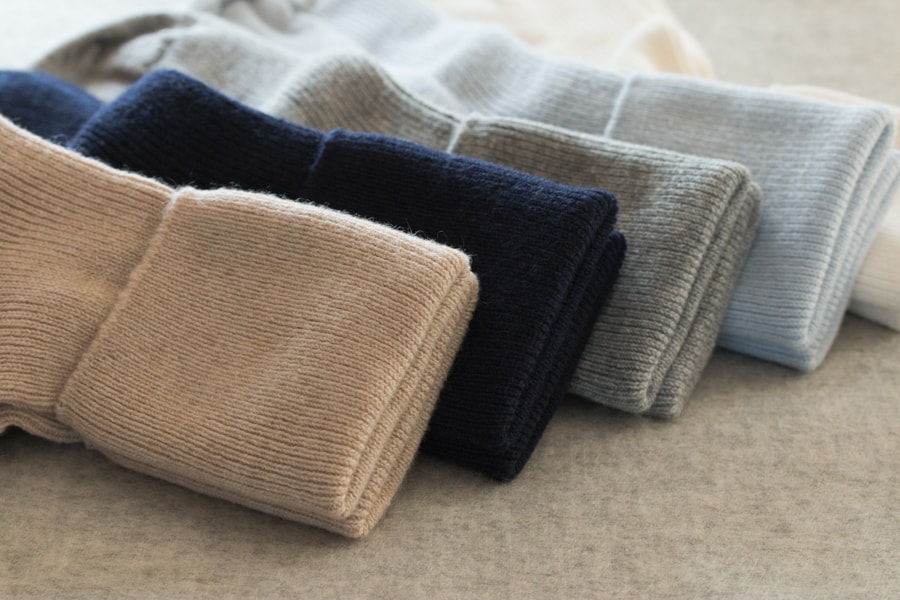

In 2019, large retailer ASOS pledged to ban any clothes made with cashmere (and mohair and silk) from their on-line retailer.
Patagonia made modifications to prohibit their clothes line solely to make the most of recycled cashmere.
Why the shifts? Rising considerations for animal welfare. Let’s dive a bit little bit of deeper.
Research additional: Is Mohair Moral? What You Want To Know
Is cashmere merciless to animals?
To know the degrees of animal cruelty contained in the cashmere commerce, we have got to position the availability chain beneath the microscope. And what bigger place to begin than with the two largest exporters: China and Mongolia.
The world accountable for a lot of of China’s cashmere manufacturing known as Inside Mongolia. Inside Mongolia was as quickly as a part of Mongolia till China gained administration of the world and renamed it. Outer Mongolia, the remainder of the nation, is what everybody is aware of correct now as Mongolia.
Tough, I do know! Nonetheless we want this context as we swap ahead.
Devastating cruelty at cashmere farming
On the extra excessive finish of the spectrum, footage has been captured of inhumane practices in China (Inside Mongolia), together with:
- Goat’s throats are slit in slaughterhouses the place completely totally different goats may very correctly be seen.
- Workers have been seen stepping in and twisting goats limbs as they aggressively tore their hair out utilizing metallic combs.
- Goats are left with primarily untreated cuts and wounds with none veterinary care. Some employees have been seen pouring rice wine on wounds.
- Workers have been seen taking a hammer to a goat’s head, making for a sluggish and agonising lack of life.
- Goats typically reside to spherical 12 however are typically seen unprofitable from 6 and slaughtered and despatched off for meat prematurely.
There’s little doubt that these goats are exploited for his or her hair, and this adjust to is one factor however moral. Nonetheless, merely all by means of the border is one totally different approach to cashmere farming.
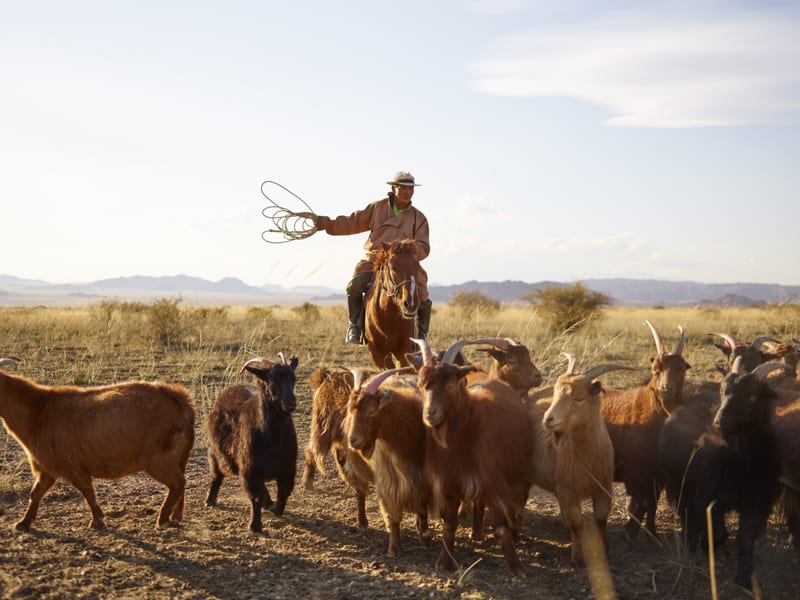

Loads a lot much less merciless practices in commonplace Mongolian practices
Because of the native local weather modifications in Mongolia, so do their herders. These semi-nomadic folks use this to their revenue by shifting between seasons to entry new pastures which can be bigger suited in course of cashmere goats, who require additional selection when it comes time to breed them — a approach that has been perfected over centuries.
In distinction, the farmers in Inside Mongolia (China) who have a tendency these animals can not swap them between customary pastures ensuing from elevated industrialisation. They should now hold their herds inside barns more often than not with fences spherical them in order that they don’t get misplaced too far from human contact beneath Chinese language language language legal guidelines enforcement companies’ watchful eye.
There’s a symbiotic relationship between Mongolian herders and their goats.
Not like many different livestock manufacturing methods worldwide, it would very correctly be argued that Mongolian goats get pleasure from only a few of the perfect freedoms. There are not any fences, they usually roam freely with out constraint or concern about getting misplaced on this large panorama.
Nonetheless even on this semi-wild way of life, the goats nonetheless face their share of hardships.
For instance, herders contained in the Gobi desert of Mongolia face excessive uncertainty and hazard every day, however they should be versatile for his or her herds’ wishes.
The terrain is harsh with little water accessible; it would correctly stand up near 35°C (95°F) all by means of summer season season season months or dip beneath -40°C (-40°F) contained in the wintertime.
Nonetheless, unpredictable native climate patterns make planning sturdy on account of there might immediately come flooding from heavy rainfall one week solely then present no signal in the slightest degree ahead of one totally different extreme flood occurs a wide range of days later.
Lack of meals and water
Because of the sturdy native climate, goats contained in the Gobi battle to devour sufficient water. With out entry to springs or rainwater, they’re counting on floor wells and handbook pumps for his or her hydration wishes. Fortunately these goats can go longer with out consuming than most completely totally different animals.
Goats typically starve all by means of winter and spring when vegetation is at its most sparse. There are occasions of the yr when goats will go days with out consuming on account of they can not uncover one factor to eat.
Some herds do pay money for supplementary feed, however it’s not sufficient for all members. Precedence is given in course of youthful or weak people first, guaranteeing survival prices maintain excessive sufficient till hotter native climate arrives as quickly as further.
Lack of veterinary treatment
Personal veterinary care is pricey and tough to entry for plenty of Mongolian goat herders. After all, there are exceptions, however as a complete, this poses fairly the issue.
If a goat will get sick or injured, it is susceptible to be some time ahead of they might address their state of affairs as veterinarians typically reside in cities moderately than making widespread visits all through the countryside.
Some obtained’t pay money for any treatment ensuing from these constraints, and people who do could not get top of the range care.
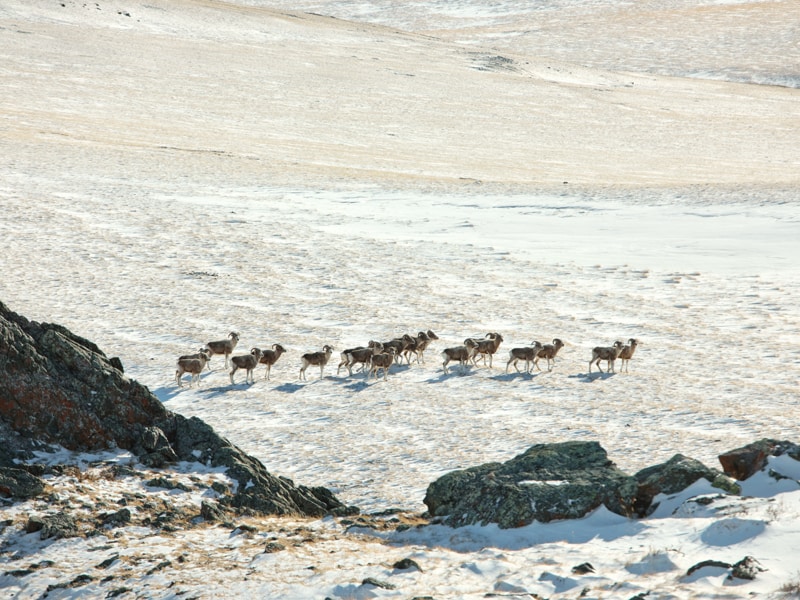

Painful castration course of
Herders perform castration surgical procedures with none anaesthetic, and it’s often accomplished at spherical 6 months of age, so billy’s can not mate with females contained in the herd.
If it wasn’t for this course of, there could be no methodology for herders to deal with what number of offspring obtained proper right here from every animal (and thus, robust genetic traits might possibly disappear).
After eradicating the testicles, they’re typically boiled and used as a part of a soup.
Goats are slaughtered for meat
Mongolian goats are slaughtered for meat as rapidly as they flip into older, and the quantity of cashmere produced by them reduces (together with its top of the range).
Goats are turned onto their backs, held by the legs, then they rapidly plunge a pointy knife into the chest cavity to chop the principle artery, guaranteeing swift lack of life with out spilling blood. Each a part of these animals is used, together with pores and pores and pores and skin/fats or milk, to provide a meals present for the herding communities.
So whereas the goats of Mongolia reside a semi-nomadic way of life that rivals that of a wild upbringing, they’re nonetheless thought-about livestock. This isn’t a sanctuary. There’s financial worth related to every goat.
Moreover, goats are bred to exist in harsh native climate circumstances with a scarcity of meals, water and veterinary care. And in the long term, as rapidly as they’re not productive every for hair or milk, they’re slaughtered for meat.
It’s for these causes that purchasing cashmere, whether or not or not or not it’s produced in typical Chinese language language language or commonplace Mongolian practices, stays to be merciless to each farmed goat.
The environmental have an effect on of cashmere farming
Cashmere herding dominates farming trades in Mongolia, with cashmere goats accounting for 41.3% of all the variety of livestock, whereas sheep make up 45.5%.
BBS experiences that there are 1.2 million nomadic herders in Mongolia, representing 40% of the nation’s inhabitants.
As cashmere costs fluctuate and inflation goes up, producers truly actually really feel immense strain to extend herd numbers to handle their companies afloat.
The cashmere goats of Mongolia are being ruined by a vicious cycle weakening the nation’s current chain and pure surroundings. As grass perishes, feed availability decreases for these animals, resulting in undernourishment.
Fibre top of the range falls ensuing from a scarcity of high-quality meals sources like tree bark. This impacts each yield ranges and the value paid when promoting cashmere supplies on worldwide markets.
The consequence? Herders purchase or breed additional goats than ever ahead of, offsetting any losses attributable to decrease yields.
Though Mongolia’s pure grasslands can barely hold the rising numbers, they harm topsoil and root constructions with their sharp hooves. Goats nibble terribly near plant roots, which harm topsoil and root constructing.
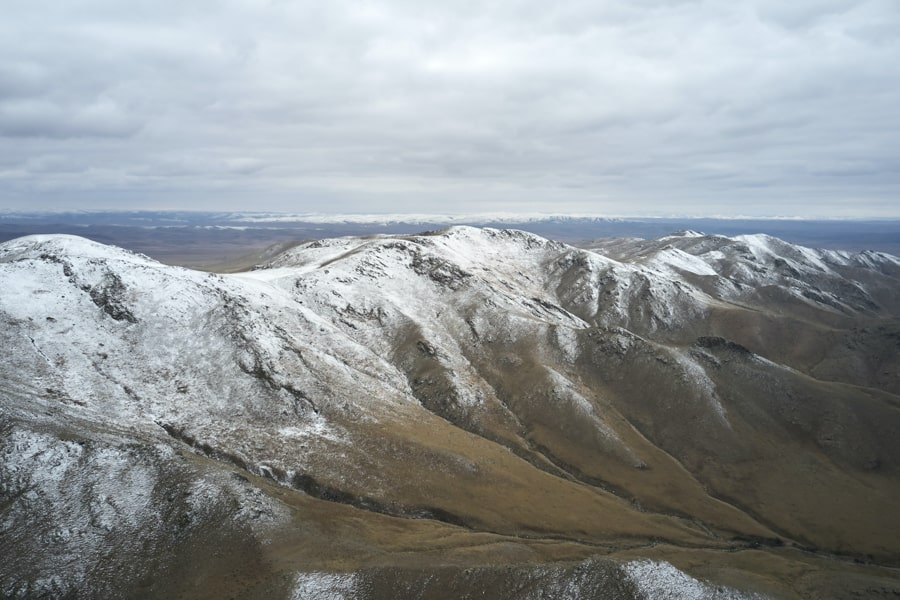

Presently, overgrazing has severely broken 70 per cent of the grasslands, making them appear as if deserts.
Overgrazing has harmed the habitats of pretty only a few native large animals, which have struggled to outlive.
Moreover, native local weather change is a element because of the intensified breeding of goats and completely totally different farmed animals contributes to elevated methane emissions. In step with goat herders contained in the area, the commerce’s enlargement is inflicting their grasslands to fade.
The United Nations reported that nearly 90 per cent of Mongolia is arid terrain, making it terribly prone to desertification.
Mongolia is a hotbed for native local weather change, with temperatures rising by 4°F since 1940 as a substitute of the worldwide widespread of 1.5 ranges.
In 2009 native meteorological stations reported a 150 per cent improve in disasters spurred by excessive native climate occasions.
Herders are put in a hard state of affairs of balancing between making ends meet and conserving their herd numbers down to cut once more environmental destruction.
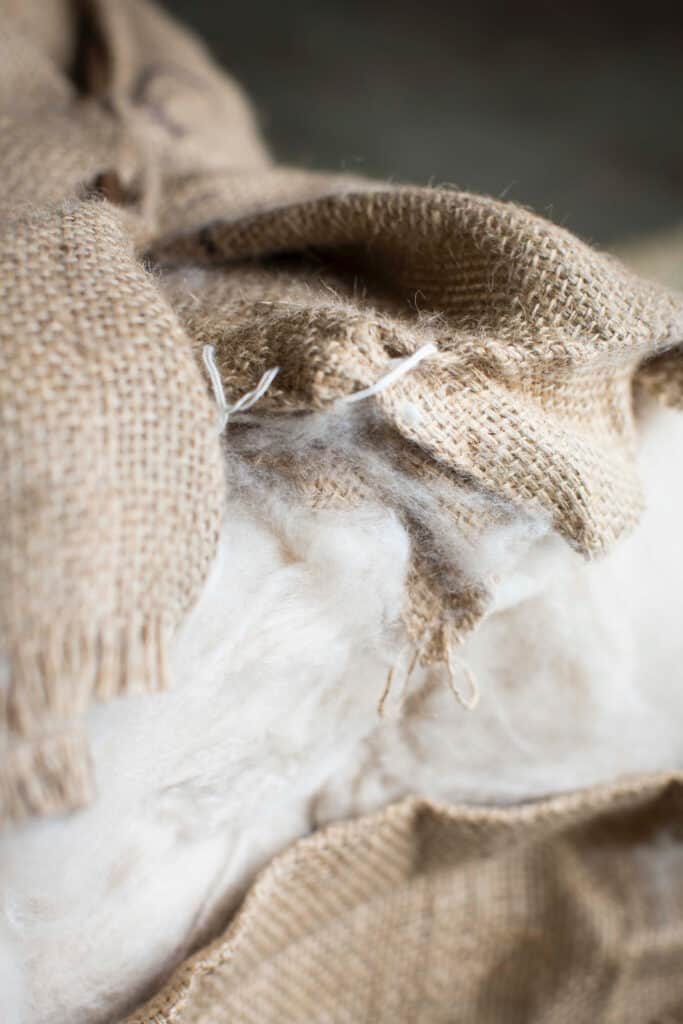

Is there such a component as cruelty-free or vegan-friendly cashmere?
There isn’t a approach of manufacturing or farming cashmere that doesn’t have an effect on the animals, people, and surroundings circuitously. For that objective, many mannequin firms have boycotted cashmere from China and constructive elements of Mongolia to advertise moral practices.
The environmental have an effect on of cashmere farming continues to worsen as herders proceed to breed additional goats than their pure habitats can assist. Sadly, there isn’t a straightforward reply to the issue that doesn’t put anybody additional into poverty.
Nonetheless there are some good alternate decisions to cashmere, together with Re.VerSo constructed from pre-consumer manufacturing facility left-overs of wool and cashmere by 5 of Italy’s principal textile producers. It is a completely clear, licensed and traceable system that has attracted the curiosity of designers who’re determined to decrease their environmental have an effect on with out sacrificing luxurious.
One totally different promising signal is The Good Cashmere Customary, a non-profit group devoted to elevating the requirements of cashmere goats with respect to the 5 Freedoms, together with the financial, social, and environmental circumstances confronted by Inside Mongolia’s cashmere farmers, their households, and communities.
They’ve set clear necessities for sustainable cashmere manufacturing. Unbiased auditors usually examine to verify these requirements are being met.
For people who do resolve to buy merchandise utilizing cashmere, search for gadgets labelled with the Good Cashmere Customary. You can too uncover a doc of partnered producers on their web site.
It could be troublesome to hunt out truly sustainable and cruelty-free cashmere, however there are some good alternate decisions with a smaller environmental footprint.
Do you assume supporting cashmere is merciless?
So, is trying to find cashmere merciless? The reply isn’t an easy constructive or no. Typical Mongolian practices in cashmere farming are rather a lot a lot much less harsh on goats than typical farming, however they arrive with their very private moral and environmental impacts.
There are cruelty-free selections for cashmere, however they’re usually dearer and additional sturdy to hunt out. Lastly, whether or not or not or not or to not purchase cashmere comes down to non-public totally different. What do you assume? Share your ideas contained in the strategies beneath.
